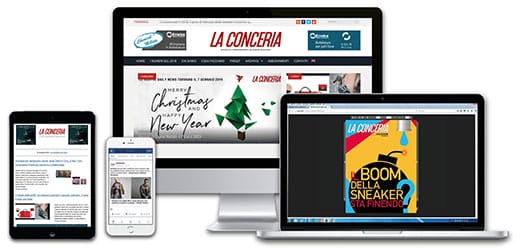Will artificial intelligence take jobs away? “Whenever there is innovation, jobs increase. That’s history. It happened with the arrival of robots, computers, email, digital technology and the web. AI will take on tasks that we currently perform ourselves, which in a few years’ time we will consider inhuman. Think of the typist”. These were the words of Valter Fraccaro, President of SAIHUB — an incubator of complementary artificial intelligence technologies and services — during the talk ‘Intelligent Weaves: The Intertwining of Fashion and AI’, held on the third day of the trade fair Lineapelle.
Fashion meets AI
The aim is to highlight best practices to demonstrate how artificial intelligence can be applied, even by SMEs. This is the objective of LORO, the acronym for Lineapelle on the Road, an itinerant initiative designed to become an observatory of best practices in AI introduced by Italian SMEs across different districts. The project was announced by Lineapelle CEO Fulvia Bacchi, who introduced the session. Numerous examples of AI applications in fashion were illustrated by Marina Paolanti, a researcher at VRAI – Vision, Robotics and Artificial Intelligence. These included the use of generative AI to vary colour combinations in products, and AI tools capable of reconstructing a shoe with precise detail from just a handful of images.
Upcoming applications
Also present was Alberto Masenadore, CEO of the Veneto-based shoemaker Peron, who shared his experience. Peron was the first footwear company to create a shoe model designed by AI. “We have always innovated, and one technology leads to another. Future AI applications? I believe in optimising and speeding up production flows and in eliminating defects”, said Masenadore. The discussion also touched on the ethical and legal aspects of AI, including copyright on generated content, as well as the need to train managers who must drive change. Yet it was also noted that AI has not yet made significant inroads into manufacturing, particularly within SMEs. Stefano da Empoli, President of the Institute for Competitiveness (I-Com), underscored this with data: “There is still much to be done, despite the potentially huge productivity gains. From design through every stage of production, supply chain, logistics, marketing and beyond, improvements could reach as much as 50%”.
Conclusions
The session was wrapped up by Emanuele Frontoni, co-director of VRAI, who stressed that the challenge is to bring AI into SMEs. “Spreading best practices to encourage AI adoption is undoubtedly an excellent initiative. LORO is also l’oro (meaning gold), because AI applications truly have the potential to make a positive impact on companies”.











